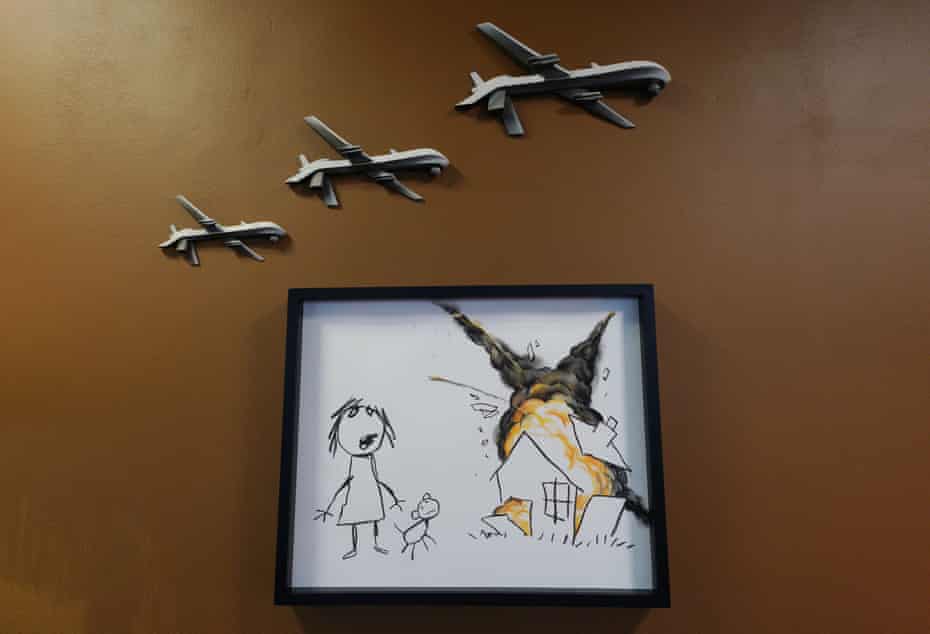Overview
From 9th – 11 March, the UK will host Security & Policing, an annual event organised by Dods and ADS Group under the auspices of the Home Office’s Joint Security & Resilience Centre. The event is a showcase for ‘innovative’ and ‘cutting edge’ technology made by firms based in the UK, and clearly evidences the increasing militarisation of police and border forces amongst other government agencies. A special place for academia is identified within the space of the event, giving an indication of the degree of entanglement of universities with government and the defence industry, which can be seen in relation to the development of drone technology in the UK, for use in border control.
Maritime Borders
Crossings of the English Channel by migrants in dinghies and other small vessels departing mainly from Calais hit the headlines in the spring of 2020, partly thanks to the ‘activism’ of Nigel Farage. The numbers of people attempting to make the crossing quadrupled in 2020 according to Agence France Presse, with 9,500 people managing to reach British shores. Six migrants lost their lives in attempts to cross the Channel and three were reported as missing. Attempts have continued into this year in spite of the pandemic, Britain’s exit from the EU and wintery weather. The UK has agreements with the French government to control movement across the Channel from the French side of the border and the UK Border Force, with the support of local police forces and the UK Maritime and Coastguard Agency, providing aircraft for aerial surveillance, control the UK’s side of the border. While there has been some use of drones – unmanned aerial vehicles (UAVs) – as part of an effort to prevent ‘irregular’ migration to the UK by both French and British agencies, these have been hampered by the requirement for drones to remain within the visual line of sight.
Use of Drones
Drones are being used in the Mediterranean by EU agencies and European states to help prevent migrants making sea crossings from reaching Europe and, once UK airspace is opened up fully to drones, our government is likely to try to follow suit in the English Channel. At least this is the claim of Peter Burt and Jo Frew in a report published in December 2020 by Drone Wars, Crossing A Line, which provides a comprehensive overview of border deployments past and present, here and across the globe. Currently, the use of drones in ‘unsegregated’ or civil airspace (that is, alongside conventional aircraft) is restricted because of safety concerns. On mainland Europe, as in the UK, drones can only be used in civil airspace if they remain within the ‘visual line of sight’ of a remote pilot who is able to manoeuvre the aircraft to avoid collisions, or by special dispensation of the aviation authorities.
Government Complicity
The UK government is investing heavily in research in artificial intelligence (AI) and related technologies. UK Research and Innovation ranks the UK as third in the world in this field and claims that pioneering countries “could gain an extra 20-25% of economic growth and productivity through AI over the next decade.” In 2019, £125 million in funding was made available to competitors in the Future Flight Challenge, a scheme aiming to revolutionise the aviation industry in part by enabling the full integration of aerial drones into civil airspace. One of the successful competitors, announced in January this year, is Airspace of the Future, a consortium led by Thales working with Cranfield University and a number of other industry partners.
The Role of Universities
Cranfield University describes itself as the “UK’s most business-engaged University.” In addition to an airport and aviation authority approved flight corridor for drone experimentation, the university boasts the Aerospace Integration Research Centre, which had a price tag of £35 million and came into being with the support of Airbus and Rolls-Royce, and the unfinished Digital Aviation Research and Technology Centre, part-funded by Thales and Raytheon amongst others, at a cost of £65 million, which will further boost its research capabilities in this field. The university chairs Academic RiSC, a participant in this year’s Security & Policing virtual event. A network of sixty-six universities, it is modelled on, and is a member of, the Security and Resilience Industry Suppliers Community (RISC), an alliance of trade associations and suppliers apparently formed at the request of the Home Office. Academic RiSC describes its role as disseminating “requests and opportunities in security and resilience from government and industry to academia” and collating “inputs from across the network for transmission back to the requesting party.” Which suggests a rather more modest role for the participating institutions than appears, in actuality, to be the case.
Why We Should Resist
A future is being engineered for us by government, and government-funded institutions making use of public funds, without much if any input from civil society, or obvious routes for these institutions to be held to account, certainly when it comes to the use of drones in border control operations. It’s a future in which deaths in the Channel, taking place ‘beyond the line of sight,’ are likely to be further normalised through drone use and in the absence of alternative, legal routes for people from the Global South fleeing war and the ravages of climate change. It’s a future that should be contested.
Further Reading
Report by InfoMigrants: https://www.infomigrants.net/en/post/29579/2021-migrants-continue-to-cross-channel-in-hope-of-reaching-uk
Peter Burt and Jo Frew: Crossing A Line: The use of drones to control borders, published in December 2020 by Drone Wars. Available for download at: https://dronewars.net/wp-content/uploads/2020/12/DW-Crossing-a-Line-WEB.pdf
If you would like to find out more about CAAT and support our work, you can sign up for campaign updates here and make a donation to our work here.
This is a guest blog: opinions of contributors do not necessarily reflect CAAT’s views.

